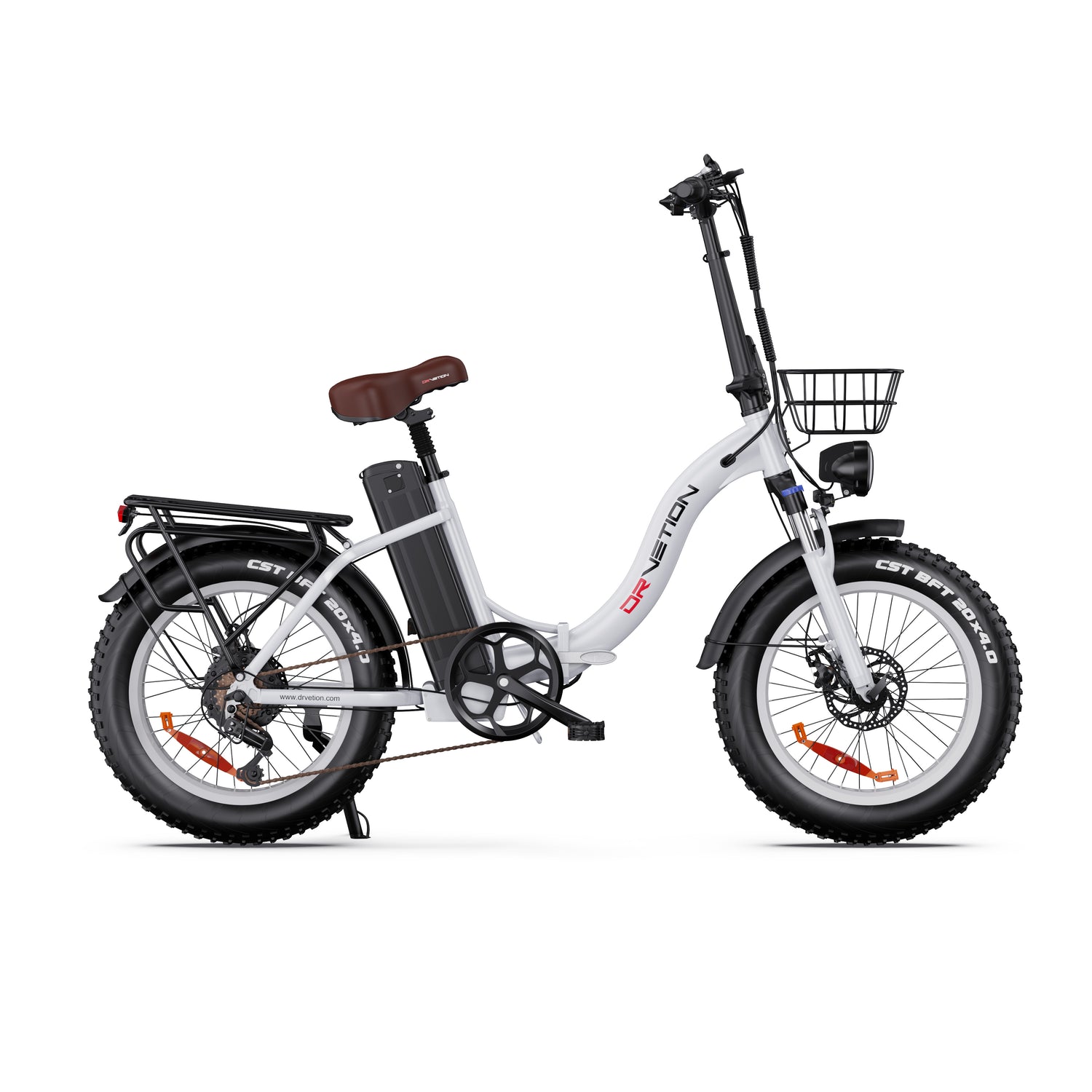Electric bikes have evolved beyond recreational use to become serious commuting solutions. Their ability to navigate rain and rough terrain seamlessly is driving many to replace traditional vehicles with e-bikes. This shift raises a critical question: Can you safely ride electric bikes in wet conditions?
Understanding waterproofing capabilities is essential before investing. Let's examine how e-bikes handle moisture, interpret waterproof ratings, and review vital safety practices.
What Makes an Electric Bike Waterproof?
Waterproof e-bikes (like the DRVETION CT20) feature critical design elements:
- Sealed electronics: Motors, batteries, controllers, and displays have gaskets or potting to block water ingress.
- Protected connections: Vulnerable ports and wiring harnesses use waterproof connectors.
- Strategic drainage: Frame designs channel water away from sensitive components.
- Corrosion-resistant materials: Coatings on metal parts prevent rust formation.

Key insight:Waterproofing depends on engineering, not aesthetics. Frame style or size doesn’t determine weather resistance.
Waterproof vs. Water-Resistant: Understanding IP Ratings
Not all e-bikes are waterproof. Protection levels are defined by Ingress Protection (IP) ratings:
|
IP Rating |
Protection Level |
Real-World Capability |
|---|---|---|
|
IPX4 |
Splash-resistant |
Light rain only |
|
IP54 |
Dust-protected + spray-resistant |
Commuting in moderate rain |
|
IP65 |
Dust-tight + low-pressure jetproof |
Heavy rain, puddle splashes |
|
IP67 |
Dust-tight + temporary immersion |
Submersion up to 1m for 30 minutes |
Critical note:"Waterproof" typically requires IP67 certification. Most consumer e-bikes are IP54-65 (water-resistant).
10 Essential Rain Riding Tips (Even for Waterproof Bikes)
1.Gear Up Intelligently
- Waterproof jacket/pants + helmet visor
- Grip-enhanced gloves + high-visibility clothing
2.Install Full Fenders
- Prevents spray from reaching electronics and rider.
3.Optimize Tires
- Use deep-tread tires
- Reduce pressure by 5-10 PSI for better wet traction
4.Brake Early & Progressively
- Wet surfaces double stopping distances. Use both brakes gently.
5.Avoid Puddles
- Hidden hazards (potholes, debris) lurk beneath standing water.
6.Protect Electronics
- Wipe battery contacts dry post-ride
- Use silicone covers on charging ports
7.Maximize Visibility
- Run front/rear lights (daytime flashing mode recommended).
8.Danger Zones
- Avoid painted lines, metal grates, and wet leaves (extreme slippage).
9.Corner Cautiously
- Lean minimally and reduce speed before turning.
10.Post-Ride Maintenance
- Clean chain and relubricate
- Dry all components before storage
The Verdict on Rain Riding
✅ Safe in rain: IP65+ bikes handle heavy rain when maintained properly.
⚠️ Not submarine-proof: Even IP67 bikes shouldn't be submerged intentionally.
❌ Avoid: Flooded streets or saltwater exposure (causes corrosion).
Waterproof e-bikes unlock true all-weather freedom—but respect their technical limits. By choosing an appropriately rated model (IP65+) and following these protocols, you can confidently embrace the rain.


